It was widely anticipated that the advent of T20 cricket or the World T20 in 2007, to be more specific, would lead to the death of bowlers, figuratively speaking, with the nature of the shortest format inherently consigning the bowlers to the role of being carted around the park.But to the contrary, bowlers have constantly come up with new deliveries and tactics and managed to be effective in T20 cricket, which has subsequently translated itself to ODI cricket as well, much to the betterment of the limited-overs game.Here are the top 10 ODI bowlers, purely from a statistical point of view, since the inaugural 2007 World T20 in South Africa:Note – Understanding how the selection was made:1. I considered only those bowlers who have taken a minimum of 100 wickets over the last 7 years. What this ensured was consistency of performance, as bowlers who have had just one or two peaks before fading away were overlooked.2. Then I considered the mean of the bowling average of these players, which turned out to be 28.39 per match. I also took into account the average of these bowlers’ economy, which was 4.94 per over per match.3. The averages and strike rates of all these bowlers were, subsequently, put to a relative measure by dividing by the means respectively, and Relative (REL) (average) and REL (economy) were obtained. I also obtained REL (wickets) on the basis of number of wickets taken in the concerned period.4. Considering that saving runs remains the top most priority in ODI cricket, I multiplied the REL (average) with that of economy and gave a rating out of 6 for the two combined. Meanwhile, I gave a rating of 4 for REL (wickets). Finally, I added the Average and Economy rating with the wickets rating to come up with the final rating.Here are the 24 bowlers who had taken a minimum of 100 wickets in the last 7 years, who were then consolidated to 10 on the basis of their final rating.
#10 Stuart Broad
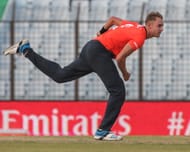
Rating: 6.66
England’s Stuart Broad, with a rating of 6.66, manages to feature at 10th position in the list of top 10 ODI bowlers of the T20 era. Although his economy rate of 5.24 from 92 ODIs, despite bowling in largely pace friendly pitches in England, is a bit on the expensive side, the fact that he has taken 149 wickets from those 92 games indicates that his best use is as an attacking weapon in the England one-day side.
#9 Morne Morkel
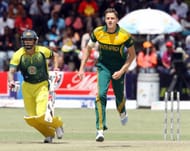
Rating: 6.93
Morne Morkel, with a rating of 6.93, is just slightly below his colleague Dale Steyn’s rating of 6.95. He has taken 123 wickets from 74 ODIs at an average of 24.35 and economy rate of 4.89 in the concerned period. Morkel’s extra bounce coupled with Steyn’s pace makes them a deadly combination, and the former will have to play an equal part as Steyn, if South Africa are to wrong their troubled World Cup history.
#8 Dale Steyn
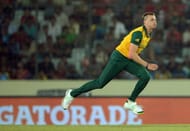
Rating: 6.95
Although Dale Steyn’s strength as a fast bowler predominantly lies in Test cricket, his ODI record is by no means inferior. He has 135 scalps from 87 ODIs at an average of 25.62 and an economy rate of 4.82, 126 of which have come since the 2007 World T20.
With the 2015 ICC World Cup to be held in the pace friendly conditions of Australia and New Zealand, Steyn will be expected to maintain his good ODI record and help South Africa to their first ever ICC World Cup title.
#7 Shahid Afridi

Rating: 6.99
It is great credit to Shahid Afridi that he has managed to establish himself as one of the best ODI bowlers in the world after starting off his international career as a batsman primarily. Relying on accuracy more than vicious turn, he has taken 179 wickets from 144 ODIs, in the last 7 years, with his leg-spin and, along with Saeed Ajmal, has been one of the leading match-winners in the Pakistan ODI set-up.
Although Afridi retains the ability to play explosive knocks with the bat, it is his exploits with the ball that have come to define his last few years in the national team, and given the uncertainty surrounding Ajmal’s participation in next year’s ICC World Cup, the onus of making crucial breakthroughs in the spin department rests firmly on Afridi’s shoulders at least for the time being.
#6 Shakib Al Hasan

Rating: 7.13
Shakib Al Hasan has been the lone beacon for Bangladesh cricket over the last few years with both bat and ball, as illustrated by his 171 ODI wickets from 136 matches at an economy rate of 4.30 in addition to his tally of 3,835 runs at an average just under 35.
Focusing on his bowling since 2007 exclusively, he has taken 139 wickets from 102 matches at an average of 27.94, giving him an overall rating of 7.13.
#5 Kyle Mills
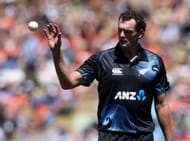
Rating: 7.22
New Zealand seam bowler Kyle Mills often goes under the radar which is understandable considering the low-profile that New Zealand players keep, but his ODI record definitely calls for opposition teams to pay more attention to the 35-year old than they do.
Over the last 7 years alone, he has taken 146 wickets from 100 ODIs at an average of 25.84 and economy rate of 4.76, rightly earning him a rating of 7.22.
#4 Lasith Malinga
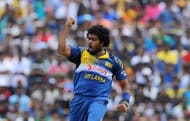
Rating: 7.62
Although Lasith Malinga has been a bit expensive in recent times, which explains his rating of 7.62, there is no doubt that he remains one of the best ODI bowlers not just of the T20 era but of all-time. He has constantly been entrusted with the responsibility of bowling in the power play and death overs for Sri Lanka, which is incredibly difficult even for someone of the Sri Lankan’s stature, and sufficiently explains him conceding 5.36 runs per over.
He has more than compensated for it, though, by picking up a colossal 210 wickets from 137 ODIs, and one can safely assume that a fair share of those wickets would have played a critical role in defining the outcome of a match.
#3 Mitchell Johnson
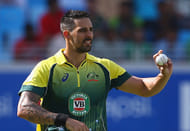
Rating: 8.18
Mitchell Johnson is the most fearsome fast bowler in the world today, courtesy of his 37 wickets from 5 Tests in the most recent Ashes Down Under closely followed by 22 from 3 Tests against the Proteas in South Africa.
It shouldn’t be forgotten, though, that his revival as an international quality bowler was kick-started by his performances in the ODI series in England last year, followed by a fruitful time during the ODIs in India shortly after. Johnson, who has a rating of 8.18, had endured a turbulent time both on and off the field during the latter part of 2011 and for a large part of 2012.
With Australia possessing a talented group of fast bowlers, there was uncertainty whether Johnson would feature prominently ever again. But he has given a fitting reply through his performances over the last 12 months across formats, and the men from Down Under will be sincerely hoping that the Queensland-born can continue his rich vein of form through to the 2015 ICC World Cup and beyond.
Johnson, who made his ODI debut for Australia against New Zealand in December 2005, has taken a total of 218 wickets from 142 ODIs in his ODI career. Since 11 September, 2007, his record is arguably even better, having taken 192 wickets from 124 ODIs at an excellent economy rate of 4.76.
#2 Ajantha Mendis
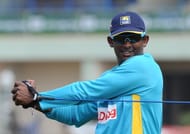
Rating: 8.57
Ajantha Mendis’ rating of 8.57 might seem too high for someone who has been in and out of the side in recent times, but the rationale behind his impressive ranking becomes clear when you take a closer look at his ODI record. He has taken 136 wickets from 76 ODI games, and played a critical role in winning Sri Lanka many ODIs in that 7-year period, especially on home soil.
With 64 scalps from his first 28 ODIs at 13.14, his start, in particular, was absolutely majestic with not even batsmen of the ilk of Sachin Tendulkar and Rahul Dravid being able to pick his variations. Over time, however, his effectiveness in the international game has dwindled which was to be expected considering the extensive video footage available in today’s times.
#1 Saeed Ajmal

Rating: 9.45
There is little surprise that Pakistan off-spinner has been the most effective ODI bowler over the last few years. Ajmal, who made his ODI debut for Pakistan against India in 2008, has a top-notch rating of 9.45 after taking an impressive 183 wickets from 111 ODI games at a miserly average and economy rate of 22.18 and 4.13, respectively.
He has been Pakistan’s go-to bowler in all situations right from the time that he made his entry into international cricket, and Pakistan will be desperately hoping that the 36-year-old can return in time for next year’s ICC World Cup after being found guilty of a suspect action in September.
Critics might argue that most of his wickets have been under the cloud of a dodgy action, but that is grossly unfair, in my opinion, to a bowler who has genuinely enriched the international game and given a great amount of delight to not just Pakistan fans but the cricketing world at large.
Brand-new app in a brand-new avatar! Download CricRocket for fast cricket scores, rocket flicks, super notifications and much more! 🚀☄️
